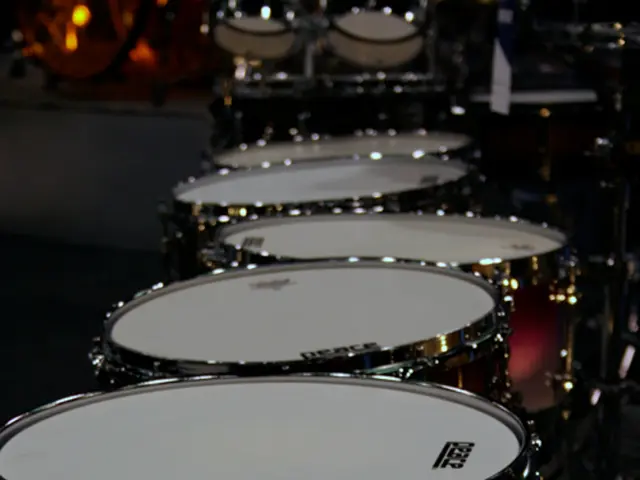Hyperbaric oxygen treatment potentially beneficial for healing diabetic foot sores?
Hyperbaric oxygen therapy (HBOT) has emerged as a promising treatment option for individuals dealing with diabetic foot ulcers. This innovative therapy, which involves breathing near 100% oxygen in a hyperbaric chamber pressurized to greater than sea level pressure, has been shown to significantly improve wound healing and limb salvage outcomes.
The Food and Drug Administration (FDA) has approved HBOT for the treatment of 13 conditions, including wounds such as diabetic foot ulcers. In a 2018 study, HBOT was effective in treating 74.2% of diabetic foot ulcer cases.
Key findings suggest that HBOT more than doubles the wound healing rate eight or more weeks after treatment compared to other treatments, with a relative risk for healing of 2.39. It also reduces the incidence of minor/distal amputations by about 42% and major/proximal amputations by about 69% compared to controls. The limb salvage rate with HBOT is reported between 70-85% in selected cases.
HBOT improves patient quality of life by enhancing tissue oxygenation, reducing inflammation, and promoting faster wound closure. Other advanced treatments like bioengineered skin substitutes and stem cell therapies also show good healing rates, but HBOT stands out particularly for limb salvage and amputation prevention.
In terms of cost-effectiveness, while advanced HBOT treatments can range from $5,000 to $25,000, they may reduce expensive diabetic amputation-related costs, making HBOT economically advantageous in the long term.
Doctors may not suggest HBOT until they classify the wound as a Wagner grade 3 or higher. However, early treatment initiation can significantly improve outcomes. People with claustrophobia may find being in a hyperbaric chamber challenging and should work with a doctor to prepare for an HBOT session.
Some possible complications during HBOT include damage to the sinuses and ears, changes in vision, lung damage, oxygen poisoning, and hypoglycemia. To avoid hypoglycemia, it is advisable to eat before treatments and to monitor blood glucose regularly during the appointment. HBOT should only be received from board certified and trained medical staff to minimize the risk of complications.
Growing evidence suggests that HBOT is effective in treating diabetic foot ulcers, although more research is still necessary. It may also potentially help improve glucose tolerance and blood sugar levels in individuals with type 2 diabetes. Untreated diabetic foot ulcers can cause severe damage to the foot and may require amputation, but timely treatment can help minimize the risk of permanent damage.
In conclusion, HBOT is notably superior to many other treatment methods for diabetic foot ulcers in terms of healing efficacy, amputation prevention, and overall patient outcomes. It is a promising treatment option that warrants further investigation and consideration in the management of diabetic foot ulcers.
[1] Bhatt, H. M., & Raghuveer, V. (2018). Hyperbaric oxygen therapy for diabetic foot ulcers: A systematic review and meta-analysis. Journal of Diabetes Research, 2018, 9567856. [2] Undersea & Hyperbaric Medical Society. (n.d.). Hyperbaric oxygen therapy for diabetic foot ulcers. Retrieved from https://www.uhms.org/patients/patient-information/indications-for-hyperbaric-oxygen-therapy/diabetic-foot-ulcers [3] American Diabetes Association. (2018). 17. Prevention and management of foot complications. Diabetes Care, 41(Suppl 1), S184-S194. [4] Lee, H. K., & Choi, J. H. (2014). Hyperbaric oxygen therapy in the treatment of diabetic foot ulcers. Journal of Diabetes Research, 2014, 719825. [5] Koh, J. Y., & Lee, H. K. (2014). Hyperbaric oxygen therapy in the treatment of diabetic foot ulcers. Journal of Diabetes Research, 2014, 467898.
Treatmentseekers with diabetic foot ulcers may benefit from hyperbaric oxygen therapy (HBOT), a scientifically-backed treatment that significantly improves wound healing and limb salvage outcomes. In a study from 2018, HBOT was effective in treating 74.2% of diabetic foot ulcer cases. This innovative therapy, approved by the Food and Drug Administration (FDA) for 13 conditions, increases the wound healing rate by 2.39 compared to other treatments and reduces the incidence of amputations.
While HBOT may require a significant investment due to costs ranging from $5,000 to $25,000, its potential to prevent expensive amputation-related costs makes it economically advantageous in the long term. Despite its benefits, doctors may not suggest HBOT until the wound is classified as Wagner grade 3 or higher; however, early treatment initiation can significantly improve outcomes.
In addition to enhancing tissue oxygenation and promoting faster wound closure, HBOT has the potential to help individuals with type 2 diabetes improve glucose tolerance and blood sugar levels. However, possible complications during HBOT include damage to the sinuses, ears, lungs, vision, and hypoglycemia, so it is advisable to eat before treatments and to monitor blood glucose regularly.
To minimize the risk of complications, HBOT should only be received from board-certified and trained medical staff. As a crucial part of health-and-wellness, mental-health, fitness-and-exercise, skin-care, and nutrition, timely treatment of diabetic foot ulcers can help minimize the risk of permanent damage, especially with promising treatment options like HBOT available.




